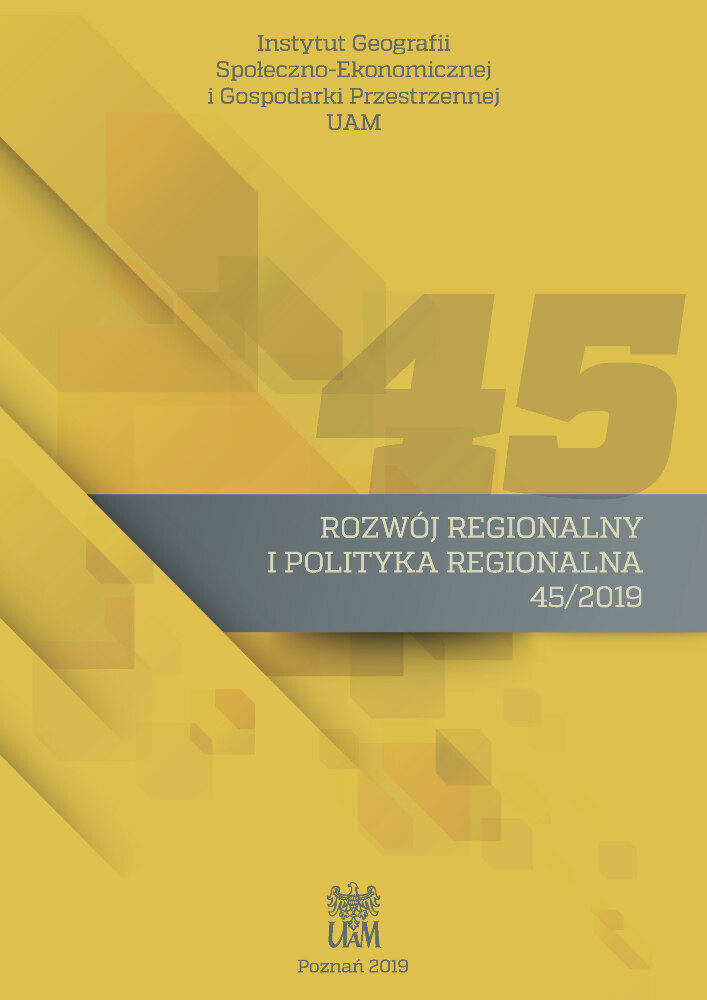Abstract
The paper presents selected issues related to the design of “complete places” – understood as friendly and socially attractive public spaces. The importance participatory planning and collaborative urban planning process is emphasized, because in Authors’ opinion that is the only way to elaborate spatial solutions meeting real social needs. The article presents the idea of complete places visioning which is an element of the didactic process carried out at the Faculty of Architecture of the Poznan University of Technology and as part of cooperation with the external environment. Presented example of a problem-based and collaborative learning seems to be a very useful tool for promoting the idea of socialized planning aiming at quality of public space improvement. There is presented a case study of long-term cooperation between academic institutes and the municipality of Tarnowo Podgórne. This cooperation turned out to be very successful thus it resulted in the erection of a complex of buildings of Civic Activation Centre in the middle of the village which is to integrate local community.
References
Augé M. 1995. Non-Places. Introduction to an Anthropology of Supermodernity, Verso, London.
Canter D. 1977. The Psychology of Place. London.
Montgomery J. 2003. Cultural Quarters as Mechanism for Urban Regeneration. Pt 1. Conceptualizing Cultural Quarters. Planning, Practice and Research, 18, 4.
Clarke A.J. 2016. The New Design Ethnographers 1968–1974: Towards a Critical Historiography of Design Anthropology. [W:] R.Ch. Smith, K.T. Vangkilde, M.G. Kjærsgaard, T. Otto, J. Halse, T. Binder (red.), Design Anthropological Futures. London, New York.
Dober R.P. 1992. Campus design. New York.
Dovey K. 1985. An ecology of place and placemaking: Structures, processes, knots of meaning. [W:] K. Dovey, P. Downtown, G. Missingham (red.), Place and Placemaking. Proceedings of the PAPER 85 Conference. Australia, Melbourne.
Doxiadis C.A. 1968. Ekistics: An Introduction to the Science of Human Settlements. New York.
Halse J., Boffi L. 2016. Design Interventions as a Form of Inquiry. [W:] R.Ch. Smith, K.T. Vangkilde, M.G. Kjærsgaard, T. Otto, J. Halse, T. Binder (red.), Design Anthropological Futures. London, New York.
Kaźmierczak B. 2018. Turystyka zrównoważona czynnikiem aktywizacji małych miast. Wydawnictwo Politechniki Poznańskiej, Poznań.
Kaźmierczak B., Matusewicz T., Pazder D. 2018. Sztuka w przestrzeni miasta jako środek kreacji i aktywizacji społecznej przestrzeni publicznych miasta. Na przykładzie studialnym Poznania. Architecturae et Artibus, 9(4). Białystok.
Kaźmierczak B., Pazder D. 2018. Complete places visioning – collaborative and problem-based learning in urban planning. Example of the Faculty of Architecture Poznan University of Technology in Poland. European Journal of Social Sciences Education and Research by De Gruyter Journals, 5, 3: September–December.
Kaźmierczak B., Pazder D. 2018. Landscape restoration as a tool of high quality public space creation – case study of Wilda district in Poznan, Poland. Scholars Journal of Arts, Humanities and Social Sciences, 6, 7.
Pazder D. 2018. Obszary kreatywności – creative syntax jako czynnik ożywiania śródmieść. Monografia. Wydawnictwo Politechniki Poznańskiej, Poznań.
Pazder D., Wnuk K., Wysoczyńska Z. 2018. Sukces studentów Wydziału Architektury!. Głos Politechniki, styczeń/luty 2018. Wydawnictwo Politechniki Poznańskiej.
Sanetra-Szeliga J. 2016. Kultura i rozwój miast. Wyzwania XXI wieku. [W:] K. Broński, R. Kusek, J. Sanetra-Szeliga (red.), Pamięć, wybór i tożsamość. Szkice o mieście. Kraków.
Zbierska-Salameh S. 2017. Centrum Tarnowa coraz bliżej! Bezpłatne pismo Gminy Tarnowo Podgórne, 7(316): lipiec.
Strony internetowe https://www.pps.org/article/what-is-placemaking
License
Copyright
© 2014 IGSEiGP, Uniwersytet im. Adama Mickiewicza w Poznaniu
OPEN ACCESS
